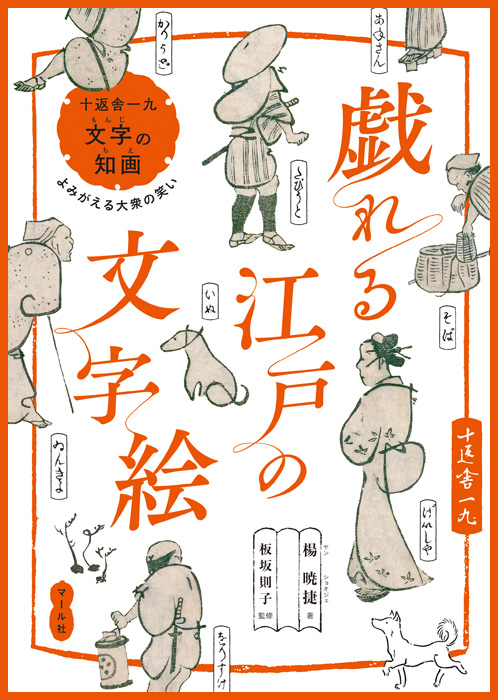. Reference and Links .
::::::::::::::::::::::::::::::::::::::::::::::::::::::::::::::::::::::::::::::::::::::::::::::::::::::::::::::::::::::::::::::::::::::::::::::::::::::::::::::::::::::::::::::::::::
- Edo geemu 江戸ゲーム games enjoyed in Edo -

- source : Tokyo Metropolitan Museum -
[ 折鶴 orizuru (origami folded crane) ]
This describes how to make 49 types of renzuru - the joining of 2 to 100 paper cranes out of one single sheet of paper.
The descriptions, however, do not actually give specific steps on how to create the various types of renzuru, but only shows how one would prepare the necessary cuts in the open origami paper before making the renzuru.
[ 影絵 Kage-e (shadow pictures ]
In the past, people enjoyed shadow performances at banquets and other functions, using hands and legs, or small implements to create shapes in the form of a wild goose or a cat behind a shoji sliding door. Try and imagine what it would look like behind the shoji and how the shadows would appear on the shoji.
[ 文字絵 Moji-e (picture with characters ]
Here you see characters depicting the names of occupations drawn into the pictures, forming the bodyline of the figures. You can learn about the manners and customs of venders and artisans during the Edo period. Can you see where the characters are hidden in the pictures?
Tawamureru Edo no moji-e 戯れる江戸の文字絵 Playful picture characters in the Edo period
Author: Yang Xiao Jie; Itasaka Noriko (Gen. Ed.) published by Maar-sha
[ 知恵の板 Chie-no-ita (tangram) ]
Chie-no-ita is made from a square board cut into 7 pieces. It is a puzzle game where you arrange 7 pieces to make various shapes.
How to play: You can select one of the 3 square boards to bring up the image of a completed form in the center of a page.
Drag 7 pieces around with you to match the final shape.
[ 判じ物 Hanjimono (watch and guess puzzle) ]
In the Edo period, there were many printed puzzles published to allow people to guess hidden words and meaning of pictures. This one here not only hides the place names, it also hides the title outside the frames and even the name of the printer. Can you guess the words inside the frames and the meaning of the pictures?
....................................................................................................................
. kage-e 影絵 shadow pictures .
- quote -
Impromptu Shadow Series (即興かけぼし尽し Sokkyō Kageboshi-zukushi)
This is a kage-e (shadow picture), a type of omocha-e (toy picture), which was painted by Utagawa Hiroshige I, the famous artist for prints depicting famous spots.
People in the Edo period enjoyed Kageboshi, in which people showed shapes of a wild goose or a cat by casting shadows on shōji doors using the hands, feet, or small gadgets.
- source : tokyo Metropolitan Library -
....................................................................................................................
. Illustration of Unwritten Famous Places (Muhitsu Meisho Annai no Zu) .
This picture puzzle served as a riddle regarding the famous spots of Edo.
Many picture puzzles that concealed some meaning within letters or pictures were printed during the Edo period.
Answers to these riddles included many things, not only names of famous places
but also the title that should be printed outside of each frame and the names of printing companies.
The answer to each riddle was printed on the bottom left corner,
allowing the viewer to come to know the famous spots of Edo.
. source : Tokyo Metropolitan Library .
.......................................................................
. hanji-e 江戸の判じ絵 Picture Puzzles, Rebus Pictuers .
::::::::::::::::::::::::::::::::::::::::::::::::::::::::::::::::::::::::::::::::::::::::::::::::::::::::::::::::::::::::::::::::::::::::::::::::::::::::::::::::::::::::::::::::::::
遊びの語源と博物誌
小林祥次郎
vocabulary - Asobi no gogen

- quote
日常のなかにひそむ「遊び」の語源と歴史をご紹介。
コトバから探る日本人の智恵とユーモア。
- contents 目次
1 子供の遊び
じゃんけん/かごめかごめ/ぶらんこ/おもちゃ/独楽/べえ独楽/ビー玉/面子/凧/こけし/双六
2 文芸
挙句/月並/けりが付く/合点/絶句/結句
3 雅楽
楽屋/二の舞/二の句/乙/打ち合わせ/呂律/やたら/図に乗る/太平楽 taiheiraku /千秋楽/後生楽/めりはり
4 楽器
琴/琵琶/笛/尺八/鼓/鈴/三味線/派手/間抜け/喇叭/チャルメラ/ピアノ
5 歌舞伎など
歌舞伎/芝居/梨園/俳優/大立者/二枚目・三枚目/女形/大根役者/馬脚/大向こう/檜舞台/板に付く/どんでん返し/かぶりつき/花道/奈落/黒幕/幕開き・幕切れ/幕無し/幕の内/捨て台詞/切り口上/だんまり/見得/立ち回り/泥仕合/正念場/大詰め/ちょん/けれん/差し金/鳴り物入り/大時代/十八番・おはこ/善玉・悪玉/半畳/どさ回り/浄瑠璃/文楽/義太夫/でくのぼう/べらぼう/のろま/脚光/すててこ
6 囲碁・将棋
囲碁/将棋/局面/序盤・中盤・終盤/結局/定石/駄目/岡目八目/一目置く/布石/捨て石/手順/手抜き/手詰まり/手筋/高飛車/成金/将棋倒し
7 賭博
博打/胴元/出鱈目/出たとこ勝負/一か八か/四の五の/丁稚/付け目/思う壺/ぼんくら/裏目/一点張り/はったり/カルタ/ピンからキリまで/先斗町/すべた/やくざ/オイチョカブ/ぴか一/麻雀
8 遊郭
郭/花柳界/吉原/島原/祇園/傾城/おいらん/お茶っぴい/おてんば/蓮っ葉/しゃらくさい/かまとと/冷やかす/地獄/達磨/色
- source : bensei.jp/index.php?main
:::::::::::::::::::::::::::::::::::::::::::::::::::::::::::::::::::::::::::::::::::
Kobayashi Issa - toshi wasure
一人の太平楽や年わすれ
ichi nin no taiheiraku ya toshiwasure
all alone
babbling idiocies...
drinking away the year
This haiku refers to an end-of-year drinking party.
Taiheiraku is "irresponsible talk." Evidently, the sake is loosening someone's tongue (Issa's?).
David Lanoue
..............................................................................................................................................

::::::::::::::::::::::::::::::::::::::::::::::::::::::::::::::::::::::::::::::::::::::::::::::::::::::::::::::::::::::::::::::::::::::::::::::::::::::::::::::::::::::::::::::::::::

- - - To join me on facebook, click the image !
:::::::::::::::::::::::::::::::::::::::::::::::::::::::::::::::::::::::::::::::::::::::::::::::::::::::::::::::::::::::::::::::::::::::::::::::::::::::::::::::::::::::::::::::::::::
. Japanese Architecture - Interior Design - The Japanese Home .
. Edo bakufu 江戸幕府 The Edo Government .
. Famous Places and Powerspots of Edo 江戸の名所 .
. Doing Business in Edo - 商売 - Introduction .
. shokunin 職人 craftsman, craftsmen, artisan, Handwerker .
. senryu, senryū 川柳 Senryu poems in Edo .
. Legends and Tales from Japan 伝説 - Introduction .
[ . BACK to DARUMA MUSEUM TOP . ]
[ . BACK to WORLDKIGO . TOP . ]
- - - - - #asobivobabulary #geemu #edogeemu #gamesofedo #orizuru #kagee #chienoita #hanjie #mojie - - - -
::::::::::::::::::::::::::::::::::::::::::::::::::::::::::::::::::::::::::::::::::::::::::::::::::::::::::::::::::::::::::::::::::::::::::::::::::::::::::::::::::::::::::::::::::::



No comments:
Post a Comment